
The initial road journey was smooth...

...but the off-road bits soon saw some howls and exclaimations from everyone...and no, we did not lose anyone out the back of the vans!
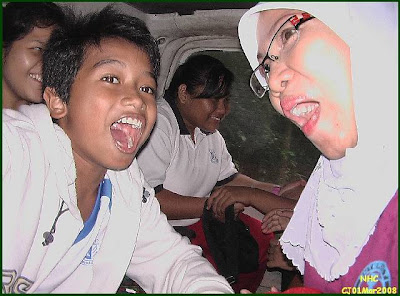

As soon as everyone alighted at the Punai hut, we had the first discovery with the trees surrounding the bicycle park. This was actually at one time a working rubber plantation. And some of the trees could still produce raw latex goo.

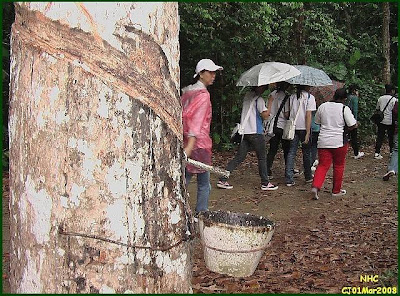

Where did rubber trees originate from?
See http://en.wikipedia.org/wiki/Para_rubber_tree
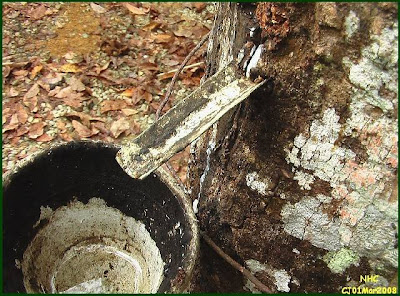

A leaf from the white-leaf fig tree Ficus grossularioides.

green green green!

This plant must obviously be secreting some kind of sugary sap to attract all these red ants.

The Information Kiosk was full due to the drizzle.

LK started things off...


A cheerful crowd ... ready to get wet with adventure!
Off we go!


First stop : the old well.
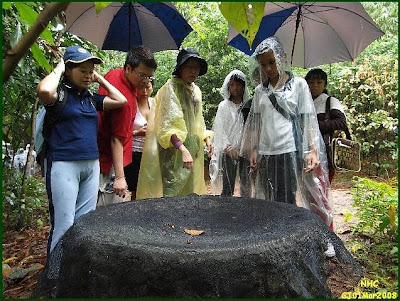

Next : the old graves and tombstones (seen to the right)
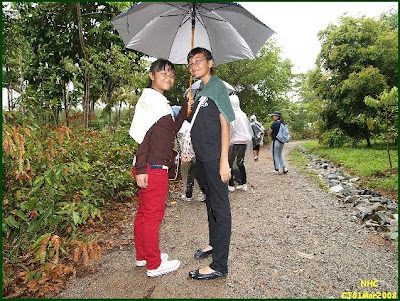
Strike a pose!

LK asking her group to smell a leaf from a tree...GUAVA! So that's what a guava tree looks like!

Interesting leafy bracts (modified leaves) from the Flemingia strobilifera tree. Apparently, these were used at one time to stuff pillows and cushions and they do have medicinal value as well!
Links:
http://cnrv.blogspot.com/2006/07/flemingia-strobilifera.html
http://uvp.blogspot.com/2006/05/flemingia.html

LK showing the Barringtonia flower. The tree is also locally called the Putat Laut tree and was used to make fish poison! This is a coastal tree and it's seeds float and are propagated by water.
(See link for more details =
http://www.naturia.per.sg/buloh/plants/sea_poison.htm)
Next, some nocturnal poo poo provides interest.
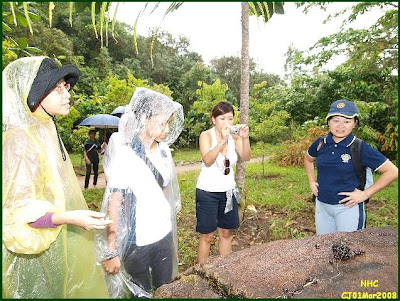
This is from a civet cat (it's not an actual cat but resembles one) which is a nocturnal animal about the size of a large cat and which is natural resident of Ubin (and reportedly can be found in mainland Singapore too! eg. Siglap).
It eats mainly fruit and passes out seeds. In places where there are coffee plantations, the civet cats select only the best fruit. This results in the seeds being passed out....and collected by villagers who use the seeds to make what is probably the most expensive coffee! All naturally flavoured!
A close-up of the poo
The boardwalk beckons...still drizzly though.

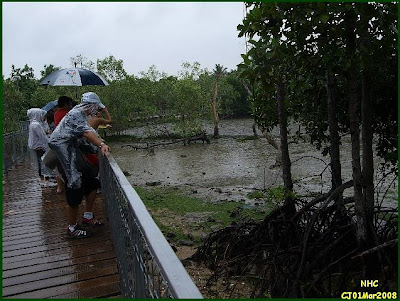
We get introduced to the 6 ecosystem types found at Chek Jawa. And only at Chek Jawa! It's that unique!!! ....UNIQUELY SINGAPORE! :)
(See http://www.wildsingapore.com/places/cj.htm)
What are the 6 ecosystems?
- the mangroves
- the sandy ecosystem
- the coral rubble area
- the seagrass lagoon
- the rocky shore
- the coastal hill forest

Fiddler crabs and friends.
Why do the male Fiddlers have one really large claw?


LK explaining about the mangrove trees to a very interested group from YISSIC.

Look! a Bird! Wow! That's a big one!
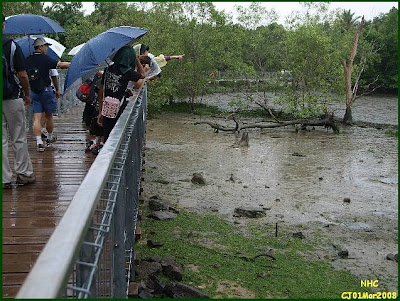
A grey heron?

The tidal mudflats revealed.....teeming with life! Each ecosystem is interdependant on each other and that is what makes Chek Jawa so unique.

We move on to the mangrove boardwalk section.

We get up close and personal to a sea hibiscus tree (Hibiscus tiliaceus).
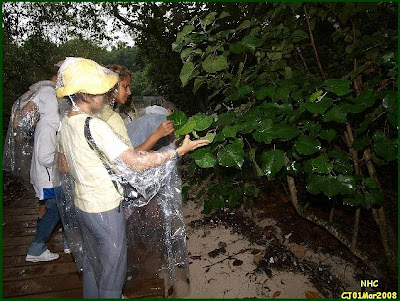

Looking for the fierce red ants and cotton stainer bugs... we did see some ants attracted to the sugary sap exuded at the leaves.

(For more information, see : http://www.naturia.per.sg/buloh/plants/sea_hibiscus.htm)
Did you know that the boardwalk is not made up of wood!...although it looks like wood?
It's actually a mix of cement and fibreglass with a wood imprint. And there are only a few basic prints ...so you can see repetitions in the print if you look closely!
Wood was seen as not environmentally friendly as a lot of trees would have had to be cut down to provide all the wood needed. So NParks came up with the idea to use a more eco-friendly alternative.
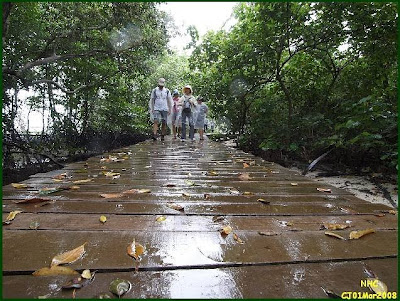
Next we come across a wild pandan plant... aka the Screwpine...

and a small one growing nearby. These have incredible thorns along the leaf edges.

These are not the sweet smelling pandan used to flavour rice and traditional malay dishes. That is from a related species. (See http://en.wikipedia.org/wiki/Pandanus). The fruit looks like a pineapple and one could easily think mistake it for one.
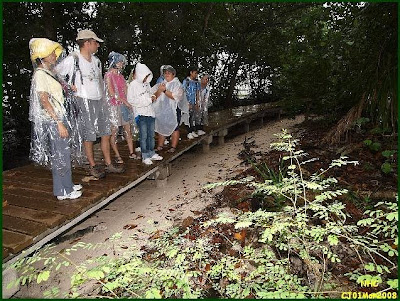
Spot any mudskippers anyone? The smaller ones were easily spotted but the large ones were hiding...probably in deeper pools. There were also lots of small crabs.

The unmistakeable flowers of the Nipah Palm tree.


Nipah palms are unique in that the trunk is actually submerged horizontally under the ground and the leaves seem to grow out of the ground. The seeds provide a most favoured ingredient in a signature local dish...the atap chee fruit in ice kachang.
some interesting links : http://www.naturia.per.sg/buloh/plants/palm_nipah.htm, http://en.wikipedia.org/wiki/Nipa_palm, http://mangrove.nus.edu.sg/guidebooks/text/1068.htm)
One of our senior participants mentioned that for over 30 years, he had wanted to know where atap chee came from...and he finally found out during our walk today! You learn something everyday!
Next the mud lobsters. An extremely shy creature. We all kept our eyes peeled for the mud lobsters....no luck this time. They are mainly nocturnal creatures.
What are mud lobsters and why are they sooo important?


Check out these links:-
1. http://www.naturia.per.sg/buloh/inverts/mudlobster.htm
2. http://mangrove.nus.edu.sg/guidebooks/text/2064.htm
3. http://mangrove.nus.edu.sg/pub/seashore/text/183.htm
4. http://www.wildsingapore.com/chekjawa/largfoto/m321ax.htm

A's group looking for mud lobsters...

The Jejawi Tower beckons...
The tower is named after the Jejawi tree (the tall tree to the right in the picture below and which is actually taller than the tower itself by a few stories!).
This is a type of Fig tree (Ficus microcarpa) and it is pollinated by a particular species of wasp.

View from above looking down
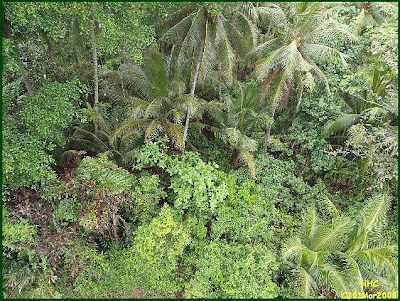
Over there is Malaysia...
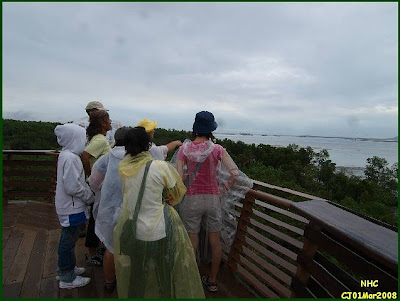

Time for a group photo.
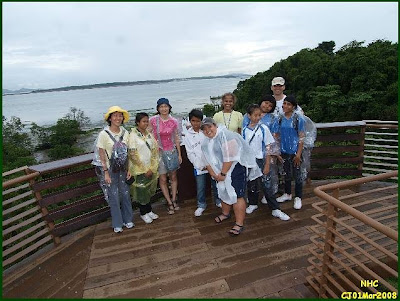
The top of the Jejawi tree...and it is still growing!
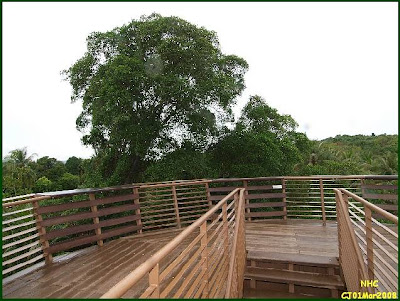
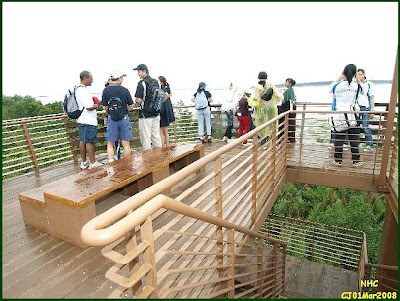


M explaining about the Fish tailed palm tree.
(See http://www.naturia.per.sg/buloh/plants/palm_fishtail.htm)
What's unusual about how this palm flowers?

We spotted quite a few butterflies fluttering about.
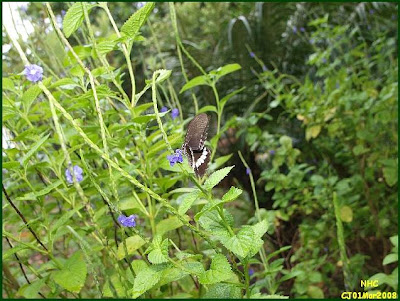
Is that wood or...something else?
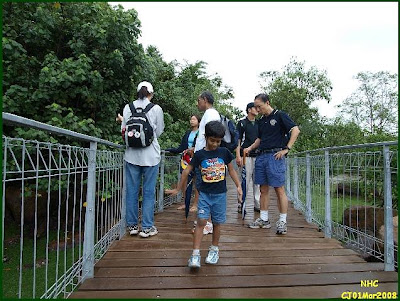
More birds could be seen looking for food.

Chek Jawa's signature mangrove tree...

We spotted this Horshoe crab moult
Are horseshoe crabs really crabs?
Have they really been around since the time of the dinosaurs?
See : http://research.myfwc.com/support/view_faqs.asp?id=21

See also : http://en.wikipedia.org/wiki/Horseshoe_crab
There was some drilling going on at Chek Jawa...not the noisy pneumatic kind but the quiet chemical kind. Drills are snails which feed on other marine snails and creatures like barnacles. They secrete a chemical solvent (carbonic acid) to dissolve the shells (calcium carbonate) of their prey and this takes up to 8 hours to perform,
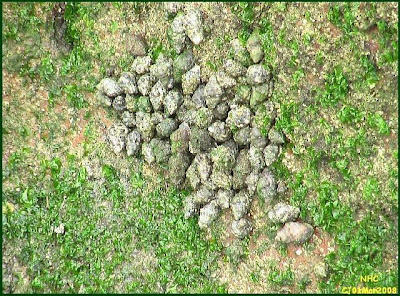

The low tide enabled visitors to look down into the seagrass lagoon.
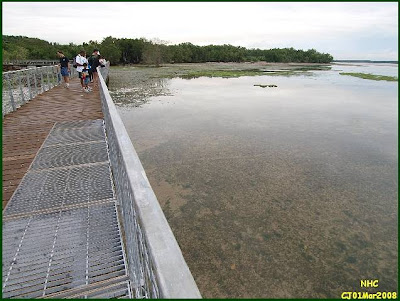
Soon, it was time to get to House #1 which used to house the Chief Surveyor and his family. Now NParks had converted it into a showcase of Chek Jawa's natural history complete with interactive displays.

Everyone was invited to mark our guestbook...
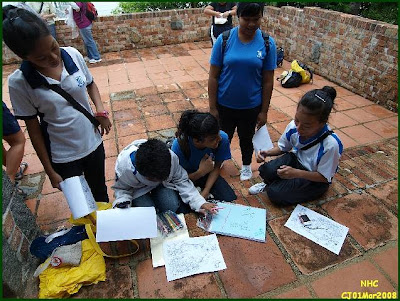


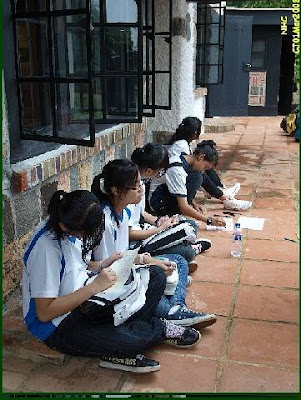
Some even joined forces and created a very filled-up page!
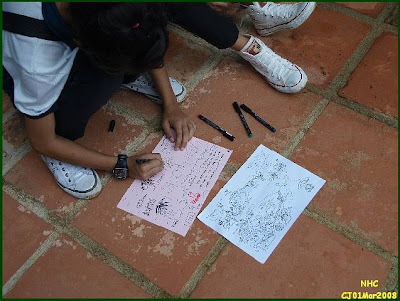

Happy smiles!
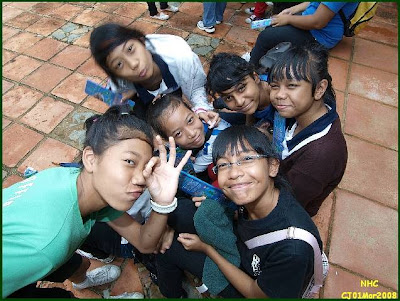
The YISSIC group with some actors from a local TV serial who were filming at Chek Jawa's House #1.

The Rotary Club of Bugis Junction group!

Everyone!
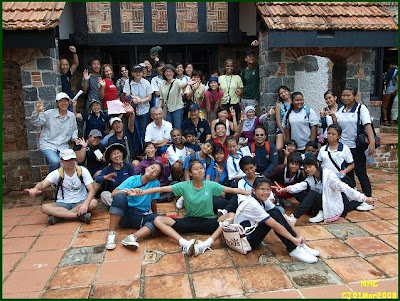
Some of the guestbook entries...

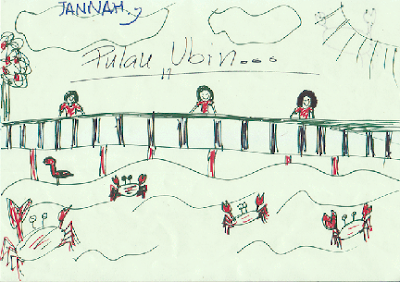
Check out the rest of the guestbook entries...
http://www.flickr.com/photos/wildsingapore/sets/72157600399114523/
And a thank you card from the Rotary Club-Bugis!!!
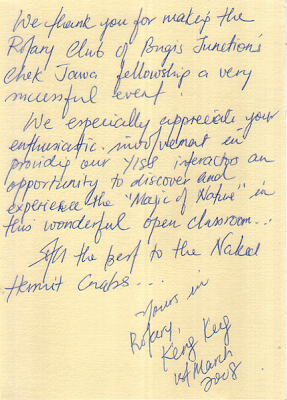
What an eventful day! Notwithstanding the drizzle.
Ria adds: Thank you to all the guides who came to do the walk: Chay Hoon, Alyce, May. And to LK for organising everything so splendidly, and to Andy for taking the wonderful photos and posting this entry!
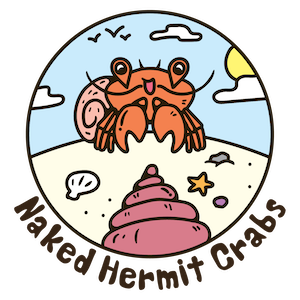
No comments:
Post a Comment